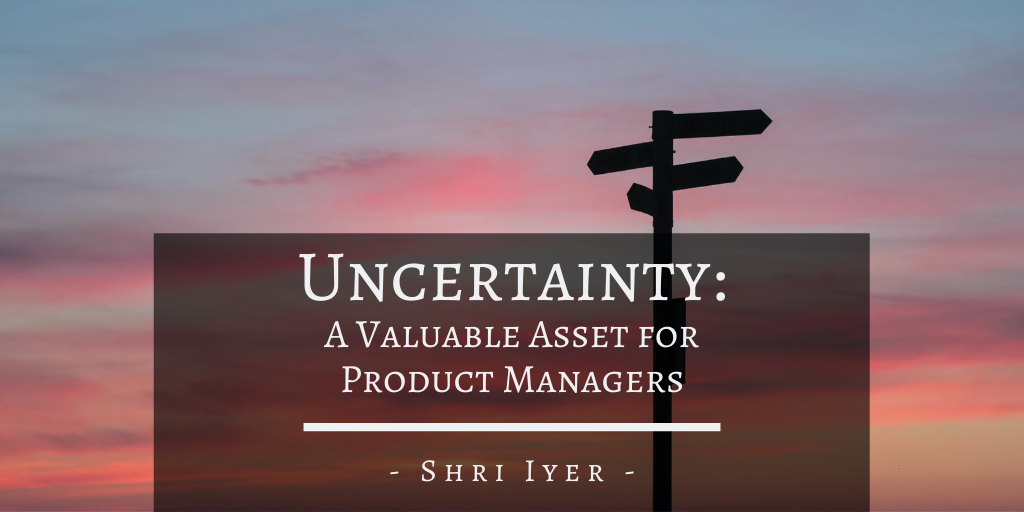The future is uncertain, but that doesn’t stop Product Managers from trying to predict it. Too often, though, attempts to forecast new normals are made in vain. The reality is that even if one is successful in predicting what tomorrow will bring, they might encounter a completely different circumstance the day after tomorrow. While focusing too much on the future is unhealthy for a product’s present needs, a forward-thinking perspective can behoove Product Managers and their colleagues. Even if PMs don’t love the unknown, PMs must be able to cope with it. After all, it’s part of the job to combat, tackle, and deal with uncertainty.
Vacate Your Comfort Zone
Jim Semick, Founder and Chief Strategist at ProductPlan, admits that he has “wrestled with needing to control uncertainty” for years. As research suggests, he can’t be faulted for that; humans are psychologically wired to seek safety and security. Product Managers must actively fight instinct; going with one’s gut can lead to tremendous rewards, and decisions should also be informed.
Bristol-based Product Lead Phil Osmond wrote a piece for Mind the Product on common fears plaguing PMs. One of those fears, he explains, is uncertainty. As Phil writes, “Handling uncertainty is one of the reasons we have our roles, so let’s embrace it!”

Product Managers are not the only professionals facing uncertainty. Entire product and project teams, stakeholders, and even potential buyers might doubt the staying power or authenticity of a product. While PMs may not want to face that uncertainty, it’s part of the job description and often necessary to overcome potential product issues. Getting out of one’s comfort zone and researching the root of this uncertainty can be useful, as can making quick decisions. Nip what you can in the bud, and let the rest of the uncertainty push your product forward!
Keep Strategy Flexible
Imagine looking at a map as you plan a road trip. There are dozens of routes to take, each one unique yet able to take you to the same destination. Perhaps you decide to take the highway, but major construction or a crash diverts your course. Is it the end of your trip? Of course not; you consult your atlas or GPS and find a connecting route. This detour may change the timeline of your journey, but you will still make it to your destination.
Product roadmaps, particularly for complex products, can behave similarly to maps. They can illustrate branching paths and different options for achieving the same result—a fantastic product.

It’s easy for teams to depend upon feature-driven roadmaps, which explore the what of a product’s creation but not the why. UserVoice VP of Marketing Heather McCloskey uses such roadmaps as a cautionary tale:
“A feature-driven roadmap can often be a side effect of product strategy more focused on closing deals than creating positive outcomes. While revenue and new customers are certainly important to a business, sales-driven roadmaps aren’t sustainable or great in the long term.”
Rather than establishing a rigid plan, PMs should create an outcome-driven product roadmap. After all, flexibility is a PM’s greatest asset in embracing uncertainty. By remaining cognizant of internal and external changes, teams can pivot strategies and adjust features to suit the product better.
Maintain a Product Mindset
Pendo Content Marketing Manager Sara Estes breaks down the product mindset into four categories:
- Customer – The beginning and end of a product’s development
- Clarity – The core component of all collaboration
- Creativity – The requirement for developing new solutions
- Curiosity – The natural instinct of a Product Manager
As Estes writes, each category comes with its own uncertainty. Will customers like or need a product feature? Will colleagues understand the big picture? Will X solution work better than Y? Why, why, why? Each question oozes uncertainty, but by putting the categories back together, Product Managers can remain confident in their abilities to combat the unknown. This may involve reworking risk management strategies (Clarity and Creativity), rehashing conversations about product viability (Customer and Curiosity), or pooling colleagues for unique ideas and solutions (Curiosity and Creativity).

The product mindset fills in many blanks throughout the product’s life cycle. Too often, Product Managers run the risk of breaking things down too far. Remember that no element of a product occurs in a vacuum. Understand the big picture, as well as the interconnectivity of each product facet. In doing so, PMs can better handle any uncertainties down the road.
Combat Stress
If a Product Manager feels fear and anxiety set in, it’s time for some old-fashioned stress management. Product-based roles are inherently stressful—from balancing the needs of different parties to navigating minefields that stand between a team and a finished product, finding inner peace can be challenging. Uncertainty about the future only seems to add to this stress, especially when tough decisions must be made.
Uncertainty can become useful for Product Managers hoping to minimize stress. As backward as that sounds, it’s true. Sprintwell Chief Product Officer Ryan Seamons writes that the best teams are ones that assume, from day one, that a product or feature will fail. To some, this may appear a negative way of thinking. However, when planning for the worst, you will be forced to think about strategies to avoid failure. That thinking will lead to the development of mitigation strategies. With those in your back pocket, you will not be blindsided if and when trouble arises.
“The goal isn’t to hit a deadline,” Ryan writes. “It’s to learn.”

Even when the future looks bleak, remain positive and confident. This will trickle down to every member of the team and then back up to you. Thus, you can embrace uncertainty without sacrificing the power of strategy and planning.
Conclusion
No Product Manager, whatever their skill level, will be able to predict the future with one hundred percent accuracy. As scary as it sounds, this uncertainty should be something to celebrate; it makes each day on the job unique and memorable, all while encouraging teams to flex their creative muscles and try new things!

